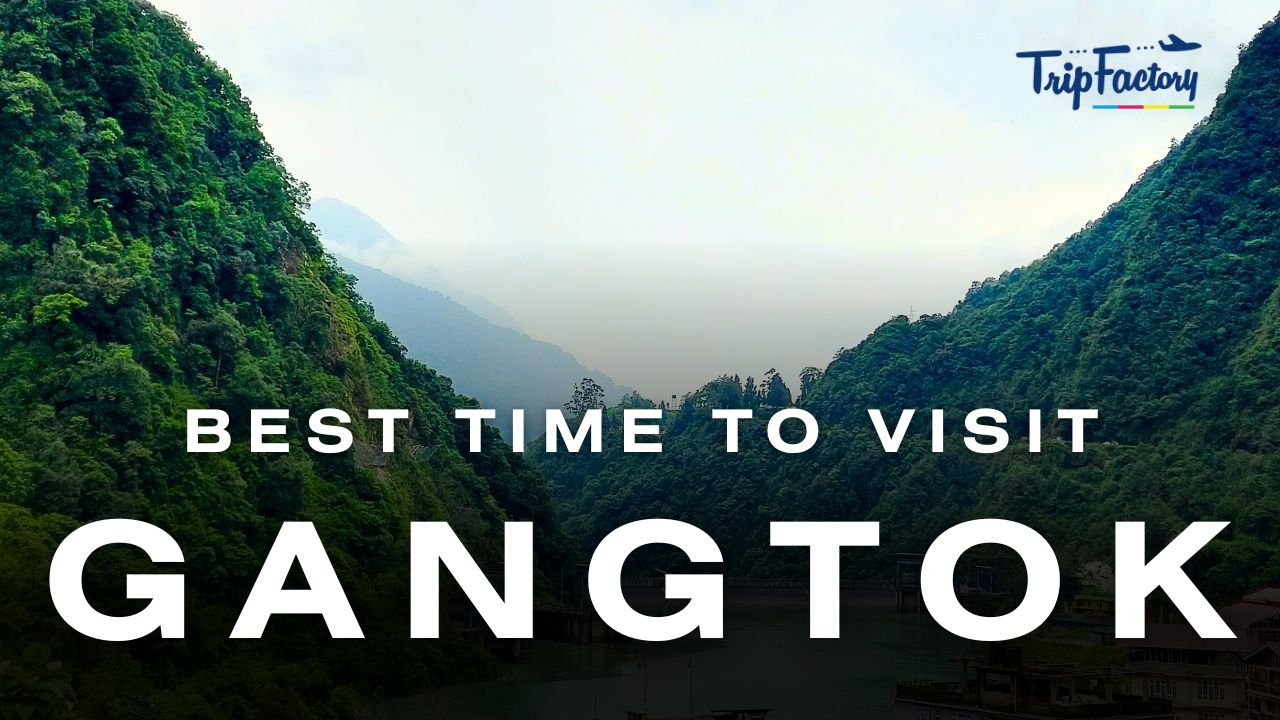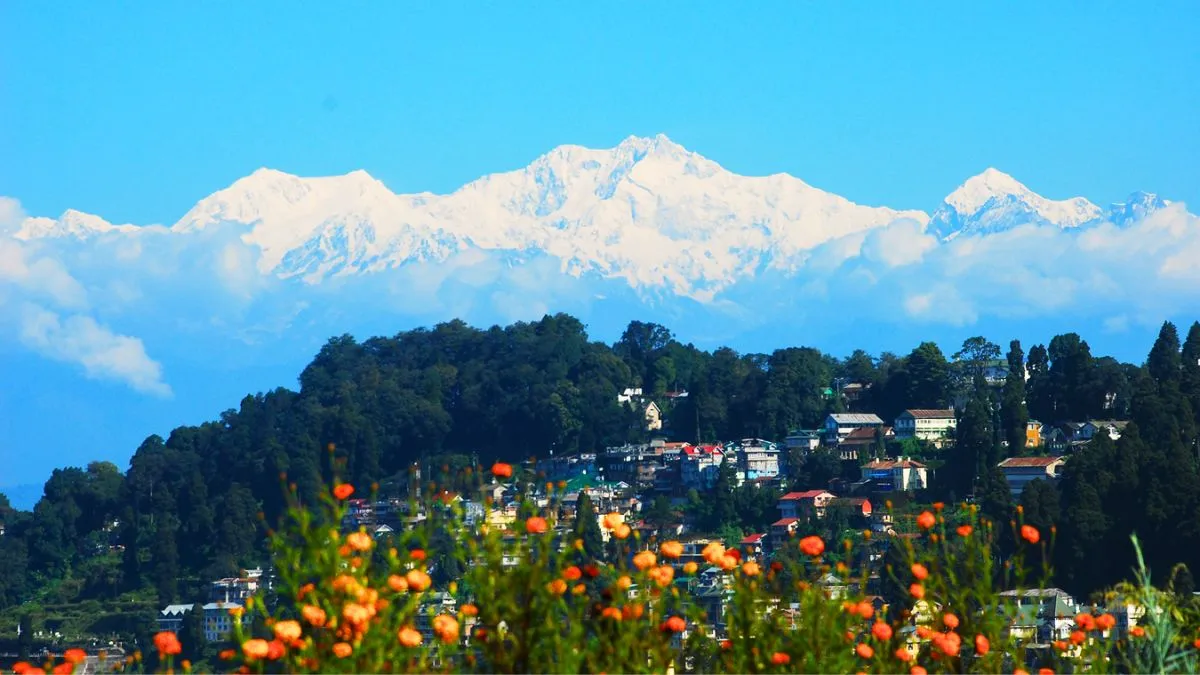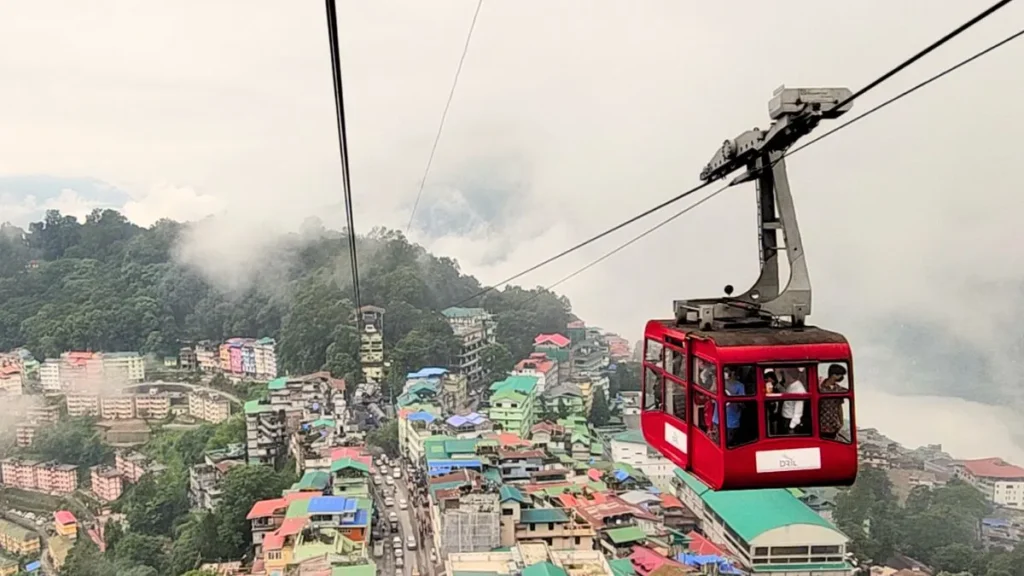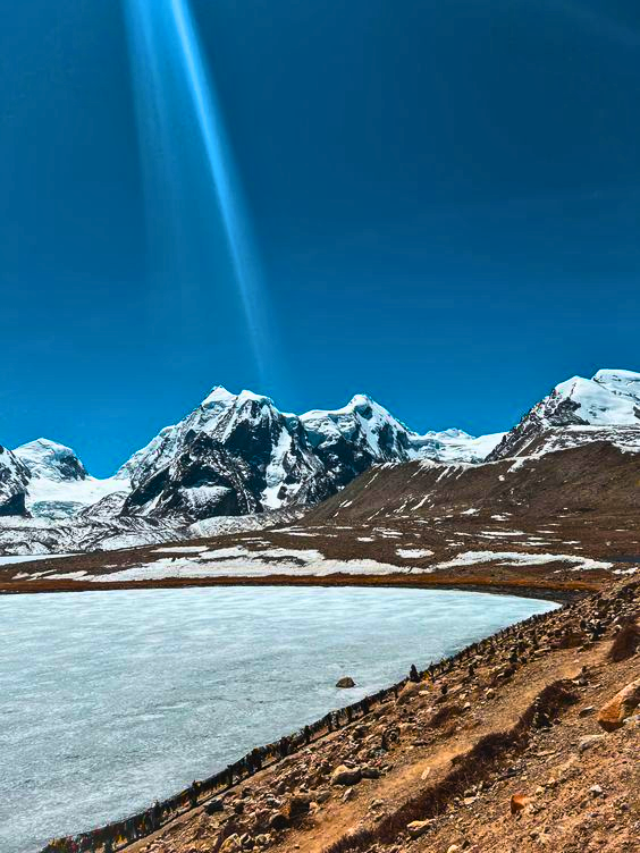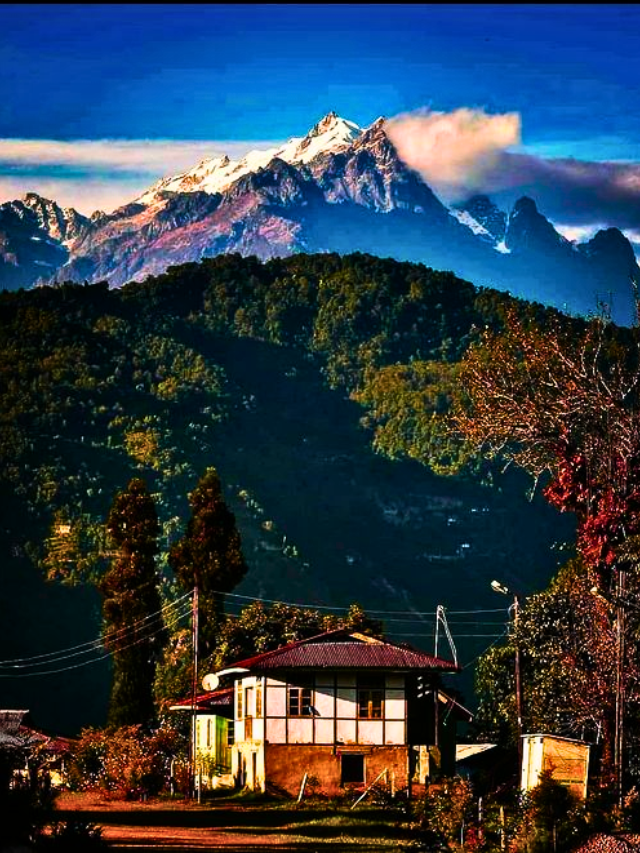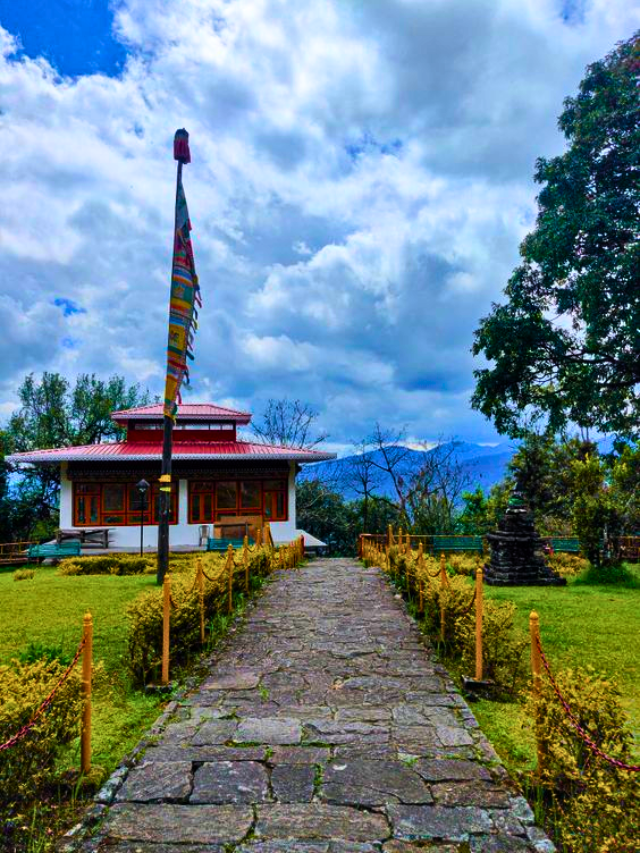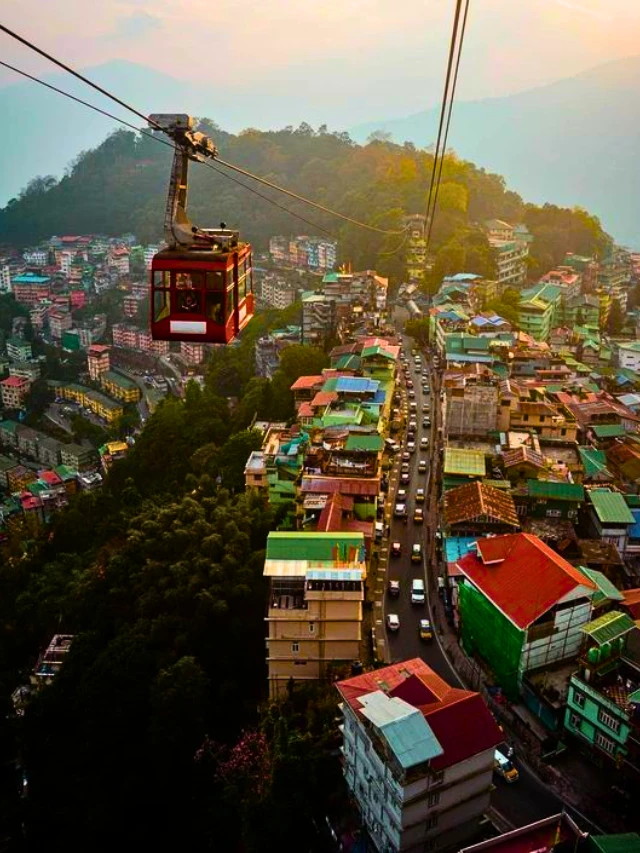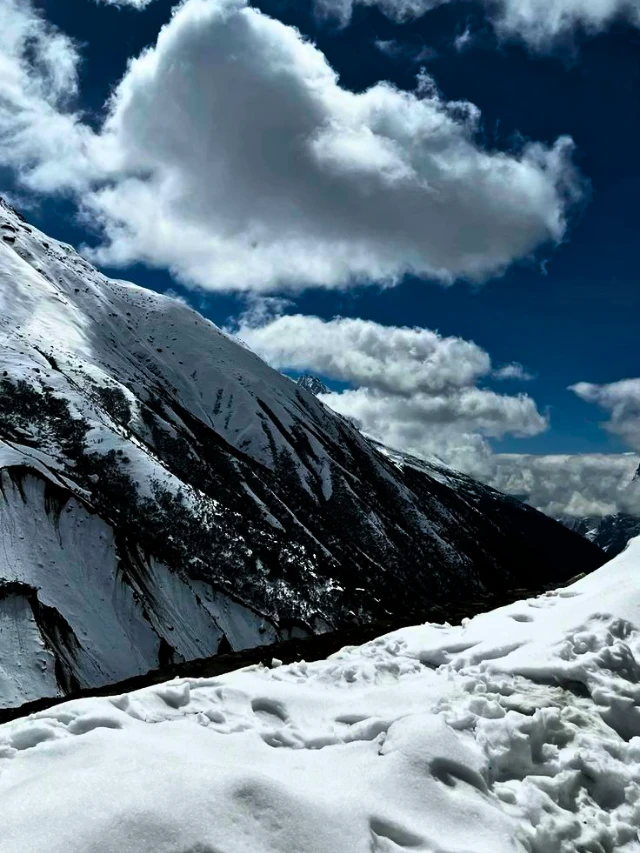The weather in Gangtok varies beautifully throughout the year. January and February are cold (1.8°C–10°C), perfect for winter lovers and views of the snow. March to May (5°C–18°C) brings a nice change with nice weather and spring flowers .
June to August (14°C–19°C) is the rainy season with heavy rains and travel risks due to lots of landslides and road closures, so it is best to avoid it. September (around 14°C–19°C) sees the temperatures start to clear and October to November (7°C–17°C) sees the cool, dry weather that makes travel more enjoyable.
December sees the cold again (4°C–11°C), so choose your time and come and visit and you will surely have a great time.
Complete Details About Best Time & Season to Visit Gangtok
Month Wise Weather in Gangtok
| Month | Avg. High Temp (°C) | Avg. Low Temp (°C) | Weather Description | Rainfall | Ideal For |
| January | 9.8 | 1.8 | Cold and crisp with occasional frost | Low | Snow seekers, winter lovers |
| February | 10.9 | 2.5 | Cold mornings, pleasant daytime | Low | Nature lovers, photographers |
| March | 13.7 | 5.6 | Spring blooms, comfortable weather | Moderate | Families, general sightseeing |
| April | 16.4 | 8.9 | Mild and pleasant, rhododendron season | Moderate | Honeymooners, outdoor activities |
| May | 17.8 | 11.4 | Warm and lush, peak travel season | Moderate-High | Family vacations, adventure trips |
| June | 18.9 | 14.2 | Start of monsoon, occasional landslides | High | Not recommended |
| July | 19.1 | 15.1 | Heavy monsoon rains, limited outdoor travel | Very High | Avoid travel |
| August | 19.4 | 15.3 | Monsoon continues, landslide risk | Very High | Avoid travel |
| September | 19.1 | 14.1 | Rain reduces, green landscapes, cool weather | Moderate | Quiet trips, photography |
| October | 17.4 | 11.2 | Clear skies, festive vibes, romantic weather | Low | Honeymoons, peaceful trips |
| November | 14.1 | 7.4 | Cool and dry, perfect visibility | Low | Couples, scenic lovers |
| December | 11.0 | 4.2 | Cold, chance of snow in higher regions | Low | Winter trips, cozy stays |
Gangtok by Months
Best time to visit Gangtok and nearby places
Choosing the best time to visit Gangtok depends largely on the type of experience you want. Here is a clear guide to help you plan your trip according to your travel style:
1. For Snow and Winter Lovers (January – February)
If you enjoy cold weather and the chance to see snow, January and February are the best months. The temperature ranges from around 1.8°C to 10°C, which gives a pleasant touch of winter. Gangtok is calm during this time, so it is perfect if you want to relax, enjoy the clear skies and watch the snowfall in the nearby highlands.
2. For Sightseeing and Nature Lovers (March – May)
From March to May, Gangtok is warm from 5°C-18°C. The weather remains pleasant and flowers start blooming, making it the best time for travelers to visit Gangtok to see these beautiful natural sights. This season is ideal for families and first-time travelers who want to explore the city and nearby natural attractions such as Lake Tsomgo and the Flower Exhibition Center without any hassle.
3. For honeymooners and couples (October – November)
The cool, dry weather (around 7°C-17°C) between October and November creates a calm and romantic atmosphere. This is the best time for those who want to spend time with their partner in a good mood, enjoy a relaxing evening. The weather is perfect for outdoor walks and scenic drives.
4. For families (March – June)
If you are traveling with family, the months of March to June offer moderate temperatures and comfortable weather (5°C-19°C). This is a great time for children and adults alike to enjoy sightseeing, local culture, and outdoor activities without having to face extreme cold or heavy rain.
5. Avoid the monsoon season (June – August)
Gangtok receives heavy rainfall from June to August, with temperatures ranging between 14°C and 19°C. The monsoon season brings slippery roads and the risk of landslides, which makes travel unsafe and an unstable environment as you cannot explore anything well in the rain. Hence, it is better to avoid traveling during these months.
6. Post-monsoon Refreshment (September)
September marks the end of the monsoon season and the weather becomes clearer and cooler (14°C–19°C). The fresh green landscape makes it perfect for travelers who want to enjoy the place in a less cold climate. The air is clear, and the distant views are more attractive, perfect for photographers and nature lovers.
Whatever your style or travel goals, it is essential for you to know the best time to visit Gangtok as the weather varies from season to season. Whether you want snow, flowers, or quiet romantic moments, Gangtok offers you all kinds of seasons. You just have to choose the right month!
Best time to visit Darjeeling and Gangtok together
The best time to visit Darjeeling and Gangtok together is from March to May and October to November because in the spring (March to May), the weather is pleasant and mild, with temperatures ranging between 10°C and 18°C. This is the perfect time to visit the sights, walk through the tea gardens of Darjeeling, ride the ropeway in Gangtok and enjoy the outdoors without the intense heat or cold.
All the flowers are in full bloom during this time, especially the famous rhododendron, which adds a different natural beauty to wherever you go. October to November is another great time because the monsoon has just ended, the air feels fresh and the sky is clear giving you amazing views of the Himalayas, especially Kanchenjunga. The crowds are also less during these months, so you can enjoy peaceful moments and great weather.
If you want to see snow, go in late December or January when the higher reaches of Gangtok like Tsomgo Lake often receive snowfall. Just remember that it will be cold, around 2°C to 10°C, so it is essential.
However, avoid traveling from June to September as the monsoon season brings heavy rains, slippery roads and can cause a lot of problems in your travel. So, whether you want scenic views, cool mountain air, or a romantic trip, these seasons are the best to travel to both Darjeeling and Gangtok together.
Permit to visit Gangtok
Indian nationals do not need a permit to visit Gangtok or other popular places like Rumtek and Yuksom. However, areas like Nathula Pass, Somgo Lake and Gurudongmar Lake require a Protected Area Permit (PAP), which can be arranged through a registered travel agent along with a valid ID and passport-sized photograph.
Foreign tourists need a Restricted Area Permit (RAP) to enter Sikkim, including Gangtok. This can be obtained online or at Sikkim entry points like Rangpo. For protected areas, foreign nationals also need to take a PAP, travel in a group of two or more people and be accompanied by a registered guide.
hope you find your best time to visit Gangtok so don’t be just book your Sikkim tour package with us we will manage everything for you and take care from your accommodation to Sightseeing and arrival to departure and just pack your bag and
Check Latest Stories:
Frequently Asked Questions
What is the best time to visit Gangtok for snowfall?
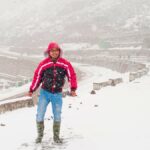
December to February is the ideal time of year to visit Gangtok when there is snowfall. Some claim that snowfall is more common on the outskirts of Gangtok than in the town center.
What is the best time to visit Gangtok with family?
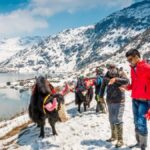
Sikkim’s capital, Gangtok, is often regarded as a secure destination for families. The months of March through June and September and October are the ideal times of year to visit Gangtok in the spring and fall.
What is the best time to visit Gangtok in winter?
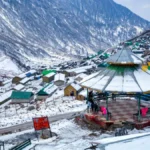
For those who like to get away from the city, October to February is the ideal season to explore Gangtok. With new snowfall falling from December to February, the city is completely blanketed in snow. December, January, and February saw an average high temperature of 7°C and a low temperature of 4°C.
What is off-season in Gangtok?

Winter in Gangtok officially begins in July and lasts until September. Since it may be difficult to travel about the area and result in road blockages, the monsoon season is said to be the least popular time of year for visitors to visit Gangtok.
Is Gangtok cold in July?
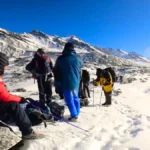
In Gangtok, July marks the start of the monsoon season, when temperatures range from around 18.4C to 23C. Rainfall turns the city’s surroundings into a verdant haven, ideal for those seeking adventure and a close-knit environment.

